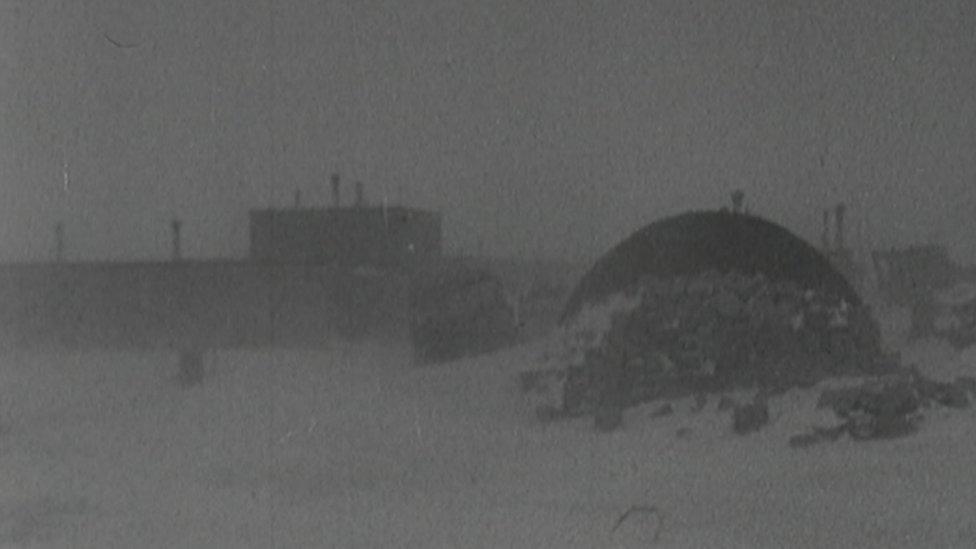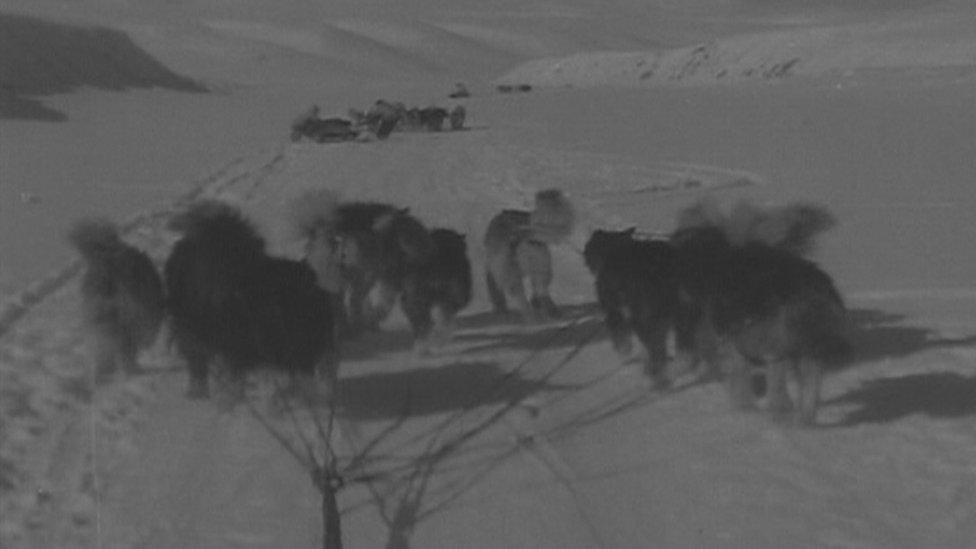'I looked after 200 penguins in the Antarctic'
- Published
Meet the man who helped bring penguins to Scotland
It was 1957. Bill Mitchell was just 21 and nearing the end of his engineering apprenticeship in Glasgow when he saw an advert in the paper about an expedition to the Antarctic.
A keen climber and hillwalker, he applied. Ten months later a letter arrived saying he'd been chosen for the trip, and he was to join the RSS Shackleton sailing from Southampton.
He was to be part of the Falkland Islands Dependency Survey team.
Now aged 80, Bill is one of the last surviving members of the team that set sail for Antarctica nearly 60 years ago.
Speaking nearly 60 years after the expedition, he told BBC Scotland: "I got on the ship and was introduced to people who had been on Scott's expedition, and to Vivien Fuchs who was to be the leader of our expedition.
"Suddenly I realised this is something a lot more than I expected."

Bill's first stop in Antarctica was Signy Island, where he was asked to collect 200 penguins for Edinburgh Zoo
After refuelling in Montevideo in Uruguay, the ship sailed to the Falkland Islands where the team were kitted out with equipment and collected supplies.
Then it was on to Antarctica. Bill's first job was at a base in the South Orkney Islands in a place called Signy Island.
He recalled: "That's where I got the message about penguins. Could I collect 100 Chinstrap penguins and 100 Adelie penguins? They were for Edinburgh Zoo.
"They didn't have any penguins at that time, so they applied to the expedition. The penguins relied entirely on me feeding them strips of fish. It was a lot of work."
Signy Island was a static base used for training and breeding dogs, and that was one job allocated to Bill, who is originally from Glasgow but now lives in Auchterarder.

Bill was responsible for feeding the penguins until they could be shipped to Scotland
As well as maintaining the engines that generated the base's power, he learned to work with the huskies.
Over the course of a year he taught them how to pull a sledge before moving onto a second base at Hope Bay where he ran his own dog team.
Bill said: "There was a little dog called Tim and I could see he was quite intelligent. I started training him to be a lead dog and he turned out to be a first-class lead dog.
"The team improved all the way along the line. We moved from centre traces to fan traces in the same way the Eskimos run their dogs.
"The most important thing was the man-dog relationship. We used 12ft Nansen sledges which had no nails or screws in them.
"They were held together with rawhide and string and can carry half a ton of equipment. Travelling most of the time would mean running along side the sledge rather than on sledge itself, and on a good day you could probably do about 25 miles."
Bill remembers the temperature dropping to minus 20C to minus 30C, but found the biting wind the most difficult to handle.

Bill was also responsible for training huskies to pull the expedition's sledges
At times the team had to dig their hut out of the snow. But the weather wasn't the only danger.
On one occasion he fell 35ft down a crevasse, his life saved only by landing on a small ice ledge. He had been part of a three-man team carrying out survey work, and they were returning to base after 10 weeks in the Misty Pass Valley Glacier.
Bill said: "It was the last night in the tent and I was trying to contact base using Morse code. I couldn't get a signal so I went out to move the aerial when I fell down a crevasse. I hit my head off the side and came to on a very small ice ledge, with nothing below me but blackness."
It was half an hour before Bill's colleagues managed to lower a rope down and he climbed out.
He returned home in 1961 after having had a great experience, and happy to have done something different.
He got married and four years later there was an unexpected knock at the door - it was a police superintendent with a letter from Buckingham Palace. Bill was to be presented with the Polar Medal by the Queen.